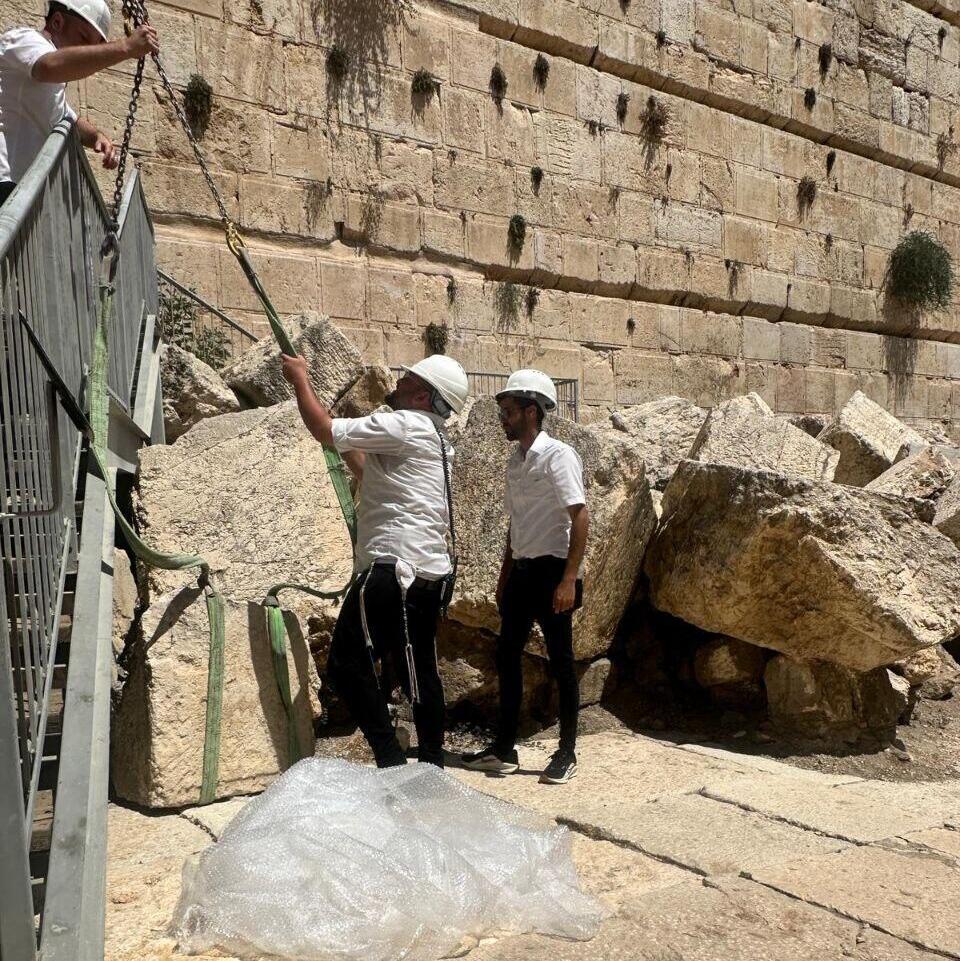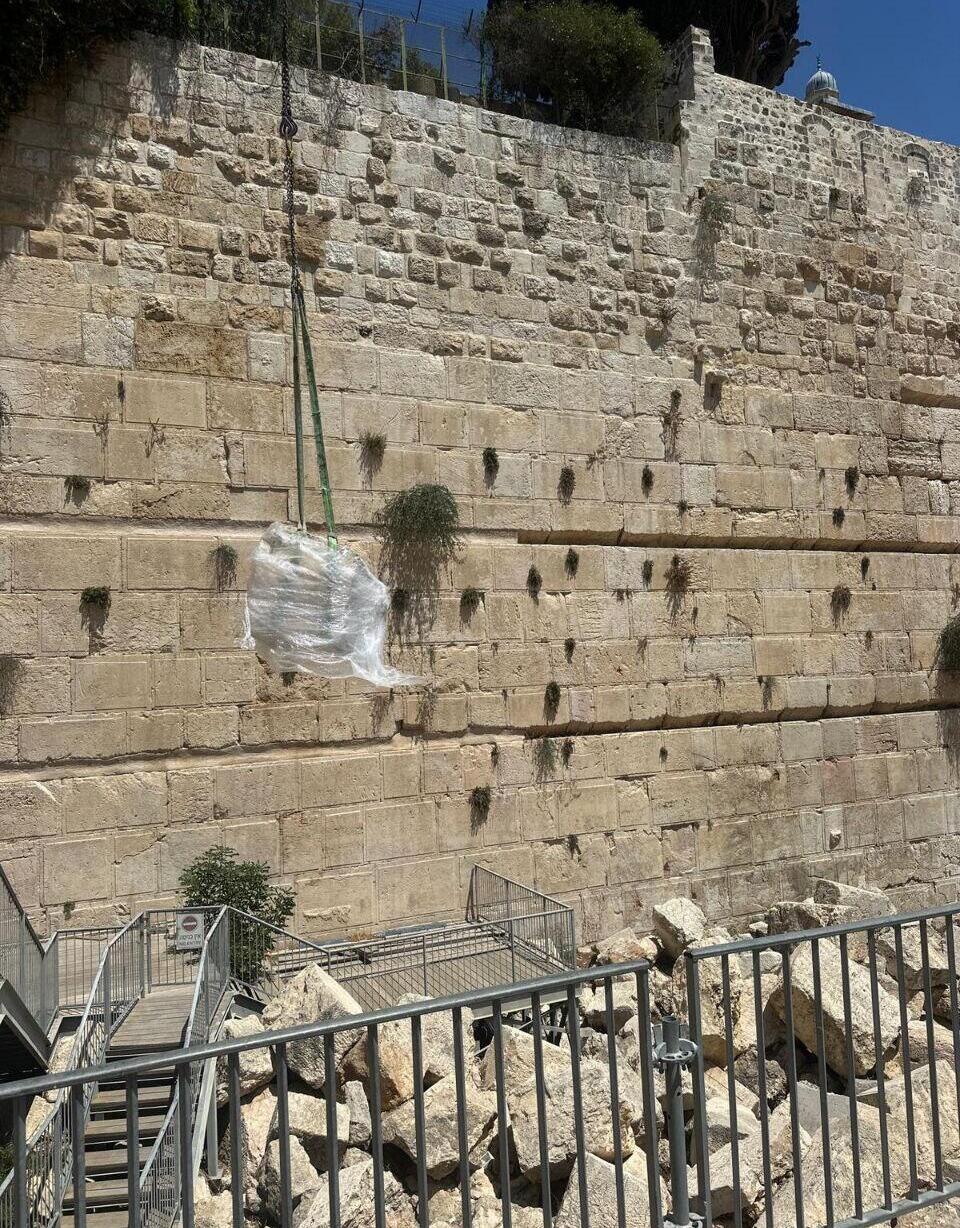Getting your Trinity Audio player ready...
Massive rock that fell from the Western Wall 6 years ago is placed among other fallen rocks at the Jerusalem Archaeological Garden
(Video: Jewish Quarter Reconstruction and Development Company)
Six years after falling from the Western Wall, a massive stone weighing approximately 400 kilograms (nearly 900 pounds) has been relocated to its new position near the Wall. The stone now rests alongside other fallen stones in the Jerusalem Archaeological Garden at the Davidson Center.
In 2018, shortly after the evening prayer for the solemn fast day of Tisha B'Av, the stone came loose and fell from a height of several yards onto the platform of the egalitarian Ezrat Yisrael section near the Western Wall plaza. A woman praying on the platform narrowly avoided injury when the stone landed nearby.
2 View gallery


Massive stone that fell from the Western Wall finds a new home next to other fallen rocks
(Photo: Jewish Quarter Reconstruction and Development Company)
Since then, the stone has undergone testing and in-depth archaeological research, according to the state-owned Jewish Quarter Reconstruction and Development Company.
On Wednesday, as Tisha B'Av approaches again, the stone was returned to the vicinity of the Western Wall using a special crane and placed in the Jerusalem Archaeological Garden at the Davidson Center. It was not returned to its original position for fear it could fall again.
"This stone, like any other stone in the Western Wall, carries a rich history and many stories. It is a witness to thousands of years of prayer, hope and faith," Jewish Quarter Reconstruction and Development Company CEO Herzl Ben Ari.
"The return of the stone is more than just a physical event; it is an opportunity to connect the past with the present, appreciate the rich history of this holy place, and preserve the connection between the generations."
2 View gallery


Rock that fell from the Western Wall placed in the Jerusalem Archaeological Garden of the Davidson Center
(Photo: Jewish Quarter Reconstruction and Development Company)
Following the stone's fall, the Israel Antiquities Authority conducted an engineering conservation survey, strengthening the Western Wall's stones on the southern side according to Jewish law and after extensive halachic discussions led by Rabbi Shmuel Rabinowitz, the rabbi of the Western Wall. Preservation operations adhered to Jewish law, with endorsements from leading rabbis, including the two chief rabbis.
Rabbi Rabinowitz accepted the recommendation from construction engineers not to return the fallen stone to its original location. The decision was made after engineers explained that extensive drilling in the area from which the stone fell was necessary, which posed halachic challenges.
Ezrat Yisrael, the site where the stone fell, is located south of the central and well-known prayer area at the Western Wall, part of the ancient retaining wall of the Temple Mount. It was established in response to the Women of the Wall organization and the Masorti (Conservative) and Reform movements of Judaism, which sought a space for prayer according to their customs without gender segregation.





